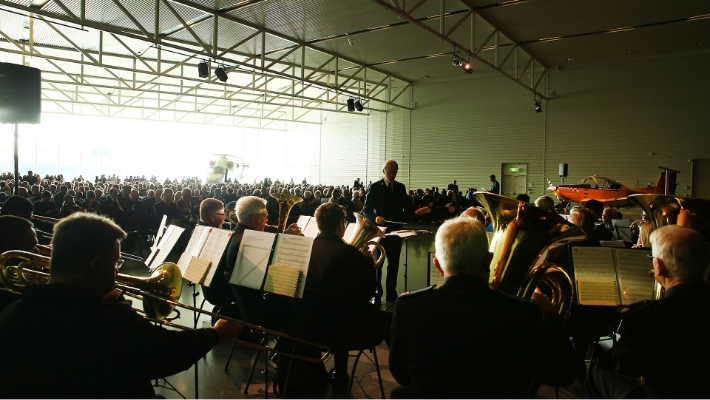Suitable for all ages
Thérèse Angelo Wing, 12pm, 25th April
Suitable for all abilities. A sign language interpreter will be present.

The Origins of Anzac Day
In December 1914, during preparations for the invasion of Gallipoli, in what is now Turkey, the New Zealand Expeditionary Force contingents were grouped together for the first time as the Australian and New Zealand Army Corps (ANZAC). Together, they provided almost half of the total number of troops in the Allied Mediterranean Expeditionary Force (MEF). From this point on, all combined Australian and New Zealand forces became known as ‘ANZACs’.
On 25 April 1915, Australians and New Zealanders landed together at Gallipoli, at a place later called Anzac Cove. This date has been adopted ever since as the national day of remembrance for war dead in both countries. This first observance of Anzac Day in New Zealand took place in 1916.
Join us in honouring our airmen at our Anzac Day Service at 12pm on 25 April in the Thérèse Angelo Wing at the Air Force Museum.

Anzac Day service at the Air Force Museum of New Zealand, 2019.
The ode
They shall grow not old, as we that are left grow old;
Age shall not weary them, nor the years condemn.
At the going down of the sun and in the morning
We will remember them.
We will remember them.
E kore rātou e kaumātuatia
Pēnei i a tātou kua mahue nei
E kore hoki rātou e ngoikore
Ahakoa pēhea i ngā āhuatanga o te wā
I te hekenga atu o te rā
Tae noa ki te aranga mai i te ata
Ka maumahara tonu tātou ki a rātou
Ka maumahara tonu tātou ki a rātou.
#StandAtDawn #LestWeForget

An RNZAF airwoman helps with the RSA’s Poppy Day street appeal in Wellington in 1979. Image credit: ©RNZAF Official PR2334-8~79
Poppies
In the Spring of 1915, fields of red poppies bloomed in the churned-up ground of the Flanders battlefields in Belgium. This sight inspired Canadian officer John McCrae to write the famous poem,’ In Flanders Fields’ and resulted in the red poppy becoming an internationally recognised symbol of remembrance.
Beginning in America in 1920, poppies were made and sold to raise funds for veterans.
The New Zealand RSA sold over 260,000 poppies for veterans’ welfare in the first ever poppy day for ANZAC Day 1922. This tradition has continued to this day, with the poppy now representing the sacrifice made by New Zealanders in all conflicts since World War One.
More to explore





